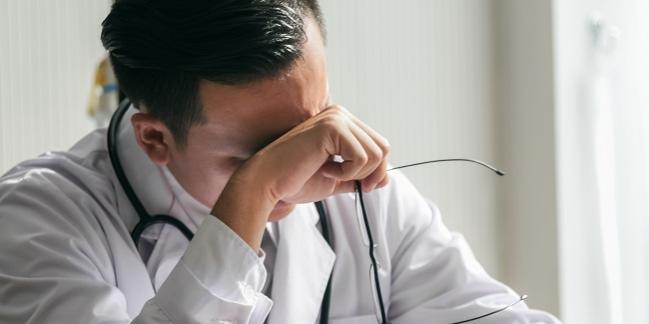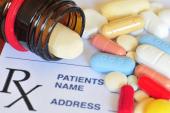Afternoon Blahs? Statin Prescriptions More Likely for Early-Day Patients
As the day progresses there is a trend toward less use of appropriate, high-value care—leaving room for improvement.

Patients eligible for statins are significantly more likely to receive a prescription for the lipid-lowering therapy if they see a cardiologist in the morning rather than in the afternoon, a new study suggests, hinting that there may be modifiable factors that could improve care.
“Across a handful of studies now, we’ve seen that the use of appropriate, high-value care tends to decrease throughout the day while the use of inappropriate, low-value services steadily increases,” lead investigator Allison Oakes, PhD (Department of Veterans Affairs Advanced Fellowship Program, Philadelphia, PA), told TCTMD. “It’s a really interesting phenomenon, because there are really very few factors known to influence underuse and overuse of healthcare.”
This pattern, said Oakes, has been observed more frequently in the primary-care setting, where breast and colon cancer screening and flu vaccinations are less likely to be given in the afternoon while opioid prescriptions and unnecessary antibiotic prescriptions tend to increase later in the day. This latest study, she said, focuses on the salient decision by specialists, in this case cardiologists, to start an eligible patient on statin therapy.
In their study, which was published February 1, 2021, in the Journal of the American College of Cardiology, the researchers turned to an electronic health record database to obtain information from 15 practice sites in the University of Pennsylvania Health System. The study population consisted of 7,271 statin-naive patients (mean age 60.8 years; 52.0% women) who made 10,353 visits to cardiologists between March 2018 and September 2019. All patients were candidates for statins based on guidelines from the American College of Cardiology/American Heart Association or the National Lipid Association. Of those included in the analysis, 56.2% were secondary-prevention patients who had a clinical diagnosis of atherosclerotic cardiovascular disease.
Overall, 5.0% of patients were prescribed statins, which researchers say is in line with the overall rate of new statin prescribing at large academic health systems. During morning visits, 5.4% of patients were prescribed statins compared with 4.4% during afternoon visits—a 25% drop.
It’s a really interesting phenomenon because there are really very few factors known to influence underuse and overuse of healthcare. Allison Oakes
The unadjusted rate of statin prescribing was 6.1% at 8 AM, 5.3% at 9 AM, and just 3.3% at noon. Beyond 12 PM, statin prescription rates ranged from 4.2% to 5.2%. The adjusted odds ratio for a new statin prescription for those with an afternoon appointment was significantly lower compared with patients seen in the morning (OR 0.76; 95% CI 0.62-0.92).
Cognitive Biases, Fatigue, and Hurried Visits
In terms of what’s happening, Oakes said there are likely several contributing factors.
“One is potentially shared cognitive biases,” she said. “For example, it can be hard to make a decision and sometimes it’s easier to do nothing, which we think could be the case here with statins. There is also the issue of hurried visits. We know that doctors have very little time with patients and they’re more likely to run behind schedule at the end of the day, which might lead them to defer decisions or quickly write a prescription, say for an antibiotic, because it’s easier to do. Then, there is also mounting decision fatigue, which is the erosion of self-control that results from the burden of having to make choices throughout the day.”
As for interventions, Oakes said a better design of electronic health records can help frame pertinent information to alert physicians that patients are eligible for guideline-directed medical therapy, such as statins. Secondly, limiting in-office encounters to those with the most pressing needs might also help, she said, noting that not all medical decisions must be made in the exam room. Doing so would allow physicians to focus on their most meaningful patient care activities and eliminate some of the cognitive fatigue that accumulates throughout the day, according to the researchers.
“We can start thinking a little more creatively about what we want physicians to do in the exam room and how they can use that time as wisely as possible,” said Oakes. Additionally, incentivizing physicians to provide high-value care, as opposed to quantity, could also increase the amount of time physicians could spend with their patients, and this would help facilitate good decision-making, she said.
To date, the researchers have not studied other CVD drugs, but Oakes suspects that the same pattern would be observed.
“I think that is the amazing thing about these time of day studies,” she said. “The impact of time of day on decisions crosses clinical areas and specialties—cancer screenings, flu vaccinations, opioid prescriptions, handwashing, statins. Healthcare is incredibly complex, and it is generally challenging to identify a factor or characteristic that impacts multiple different care process or outcomes. Time of day is an outlier. Its reliable impact on underuse and overuse makes it a valuable area for further research and intervention. Just making sure patients seen at the end of the day get the same care as patients seen in the morning has potentially large implications for health and spending.”
Michael O’Riordan is the Managing Editor for TCTMD. He completed his undergraduate degrees at Queen’s University in Kingston, ON, and…
Read Full BioSources
Oakes AH, Adusumalli S, Snider CK, Rareshide CAL, Patel MS. Variation in cardiologist statin prescribing by clinic appointment time. J Am Coll Cardiol. 2021;77;661-662.
Disclosures
- Oakes reports no relevant conflicts of interest.





Comments